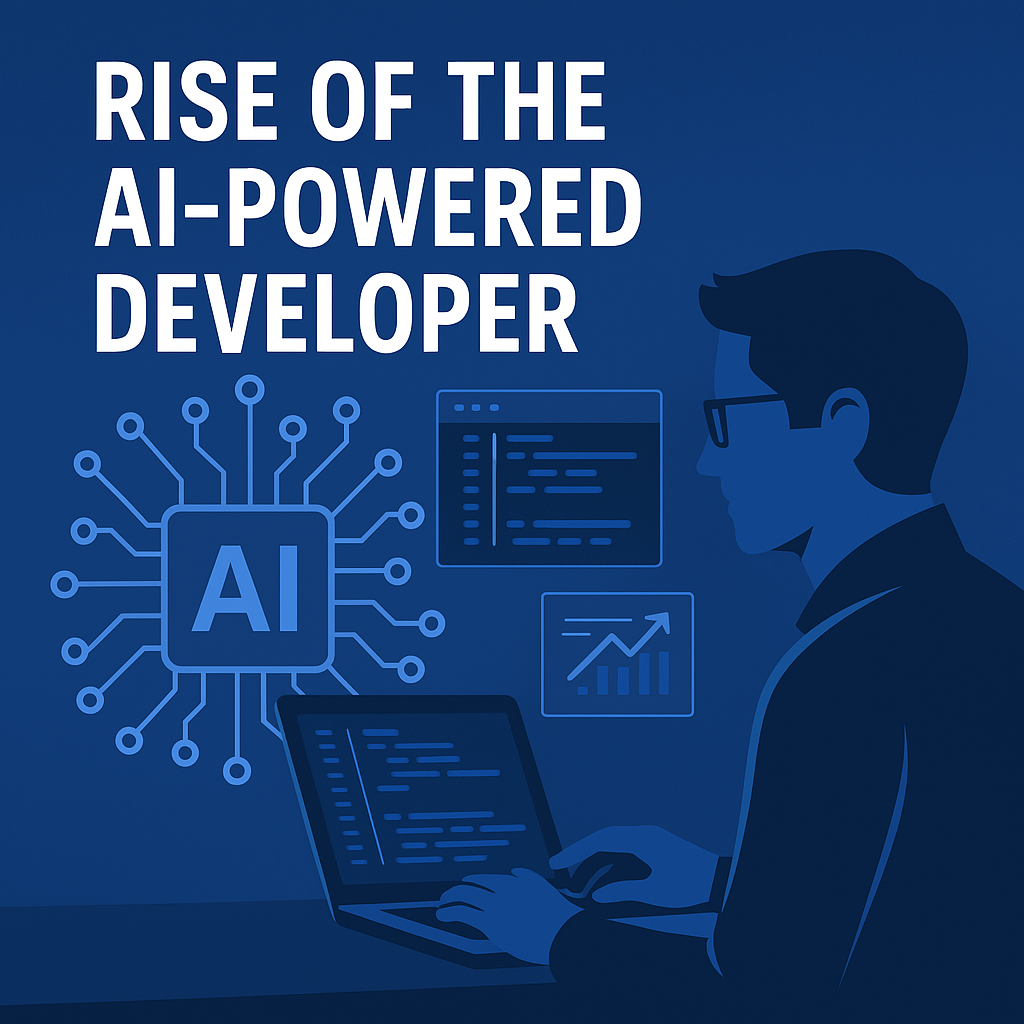AI isn’t killing software development. It’s redefining it.
Far from replacing developers, the emergence of generative AI is turning software development into a higher-order discipline—where judgment, system design, and verification carry more weight than raw coding throughput. The reality is simple: developers won’t become obsolete. They’ll become more essential. But only if organizations recognize the responsibility that comes with AI augmentation.
From Code Writers to Code Architects
AI has started to transform development environments into more natural, prompt-driven workflows. But beneath the surface, the risks of "vibe coding"—relying on trial-and-error prompting until something seems to work—are growing.
Recent GitClear research shows that code churn has spiked with the rise of AI coding assistants like GitHub Copilot. Developers are writing more code than ever, but they’re refactoring less, deleting less, and moving code around less frequently. The implication? AI is helping us write faster, but not necessarily better.
It’s a shift that turns developers into verifiers, curators, and architects of logic rather than line-by-line authors. But that requires a mindset change. Review is no longer the "final step" of development. It’s the core of the job.
AI Isn’t Optional, But Blind Adoption Is Dangerous
Let’s be clear: AI should not be removed from software development. Used wisely, it brings real gains.
At Thoughtworks, developers are already using tools like Cursor, Windsurf, and Claude Code to understand legacy systems, expand feature sets, and refactor codebases. Anthropic's Claude helped internal teams at Thoughtworks extend support to new programming languages in an existing tool.
But here’s the critical lesson: these tools amplify structured thinking. They don’t replace it.
The best results happen in well-architected codebases—where variables are clearly named, abstractions are tidy, and logic flows in a modular fashion. This isn’t just good development hygiene. It’s how you teach AI to be effective. Garbage structure in, garbage AI output out.
Structured Design Is a Prerequisite for AI-Augmented Engineering
Most development work isn’t greenfield. It’s updating and maintaining complex, sprawling, sometimes chaotic legacy systems. AI can be a co-pilot here, but only if we provide it a cockpit it understands.
This means:
-
Expressive naming conventions to anchor context
-
Minimizing duplicated logic to avoid model confusion
-
Clean modularization and dependency management
In AI-assisted environments, developers aren’t just writing for other humans. They’re writing for other minds—algorithmic ones.
Judgment Over Generation
Instagram co-founder Mike Krieger famously predicted that in three years, engineers won’t write code—they’ll just review it. That’s partly true, but dangerously incomplete.
Reviewing AI-generated code still requires deep context, domain expertise, and the ability to interrogate logic trees. When systems fail, it’s humans who will be responsible for understanding why.
This shift brings a paradox: as AI gets more capable, the burden of human responsibility increases. Trust, verification, and governance become the highest-value skills.
Enter the Virtual Delivery Center (VDC): The Future-Ready Model for AI-Driven Development
In this evolving paradigm, the AiDOOS Virtual Delivery Center (VDC) becomes more than a workforce model—it becomes an imperative.
VDCs bring together distributed talent, structured processes, and AI-augmented workflows under a single execution layer. They ensure that developers across geographies:
-
Follow best practices that align with AI-readiness
-
Leverage structured knowledge bases and prompt libraries
-
Operate with accountability and visibility
This is critical. Because AI can suggest, generate, and even test—but only VDCs provide the human-led governance layer that ensures alignment with business outcomes.
VDCs also allow organizations to scale engineering capacity without sacrificing software quality. Instead of inflating internal teams or blindly outsourcing, leaders can tap into AI-ready pods of talent that are steeped in structured development principles.
Final Thoughts: Developers Are Stepping Into the Command Seat
AI is here. It’s rewriting how we develop software, from concept to code to release.
But the idea that developers will fade into irrelevance is deeply flawed. What AI automates is syntax. What humans retain is strategy, system design, and the responsibility of truth.
As we step into a future where AI accelerates delivery, it will be developers who decide what’s worth building, what’s safe to ship, and how we sustain software systems over time.
They still hold the keys.
And the Virtual Delivery Center is the engine room they’ll need to drive this new era forward.

